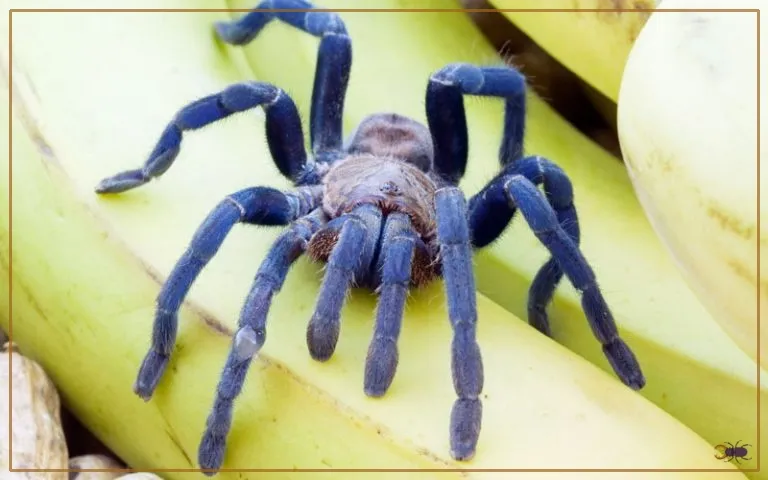Understanding the Cobalt Blue Tarantula Attack
The cobalt blue tarantula (Cyaneopubescens) is a striking, vibrant spider, prized by many for its beauty, but it is crucial to understand that while not typically deadly, a bite from this species can be a painful and unpleasant experience. Understanding the context of an attack is the first step towards survival. This involves recognizing the triggers, understanding the spider’s behavior, and knowing how to react appropriately. Unlike some other tarantula species, cobalt blues are known for being defensive and can be prone to biting if they feel threatened. This guide aims to provide comprehensive information on how to handle a potentially dangerous situation. It covers everything from understanding the spiders’ behavior to first aid, long-term care, and preventing future attacks. By arming yourself with this knowledge, you can minimize the risks and ensure your safety.
What Triggers a Cobalt Blue Tarantula Attack?
Several factors can trigger a cobalt blue tarantula attack. Understanding these triggers is vital for prevention. The most common trigger is perceived threat. This can be caused by sudden movements, loud noises, or any action that the tarantula interprets as a threat to its safety. Direct handling, especially without proper tools or experience, is a significant risk factor. Even approaching the enclosure too quickly can startle the spider and provoke a defensive reaction. Other triggers include disturbing their habitat, such as cleaning or rearranging the enclosure without caution. During molting periods, tarantulas are particularly vulnerable and defensive, and attacks are more likely to occur if they are disturbed at this time. Moreover, hunger or the instinct to protect their eggs can also make them more aggressive. By identifying and avoiding these triggers, you can significantly reduce the risk of an attack.
Territorial Behavior of Cobalt Blue Tarantulas
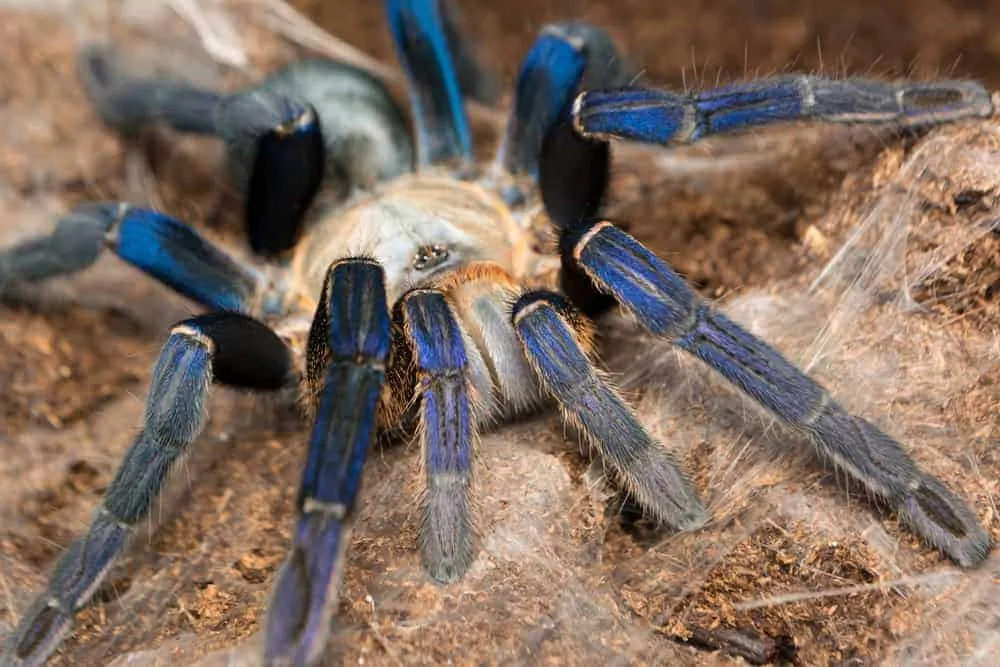
Cobalt blue tarantulas, like most tarantula species, exhibit strong territorial behavior. They view their immediate surroundings, including their burrows or enclosures, as their territory, and they will defend it aggressively. This territorial instinct is a primary driver behind their defensive behavior. They are not naturally aggressive hunters like some other spiders, but they are quick to defend themselves. When they feel threatened, they will often go into a defensive posture, which may include raising their front legs, exposing their fangs, and hissing. This display is a warning and a prelude to a potential attack. The extent of their territoriality can depend on the individual spider’s personality and the environment they are in. Understanding their territorial instincts is essential for safely interacting with these spiders, which should always be done with caution.
Defense Mechanisms
Cobalt blue tarantulas have several defense mechanisms. Their primary defense is, of course, their bite, which delivers venom. Though the venom is not lethal to humans, it can cause significant pain, swelling, muscle cramps, and other unpleasant symptoms. The spiders may also use their urticating hairs as a defense. These tiny hairs, located on their abdomen, can be flicked towards a perceived threat, causing intense itching and irritation. This defense is usually employed when they feel trapped or can’t escape. In addition to these physical defenses, they employ behavioral tactics. They may freeze in place, play dead, or try to escape if they feel threatened. Recognizing these defensive behaviors can help you avoid an attack and handle these spiders with greater care. It is very important to avoid any sudden movements near a cobalt blue tarantula.
Identifying the Attack
Identifying the attack is crucial for a rapid response. The bite itself is usually a swift, direct action. The cobalt blue tarantula will quickly strike, injecting venom through its fangs. You might not feel the bite immediately, but pain, often sharp and intense, will follow shortly. The bite location will usually start to swell, and the surrounding area might turn red. Other symptoms can include muscle cramps, sweating, nausea, and in severe cases, difficulty breathing. Pay attention to the tarantula’s posture and behavior. An attack is often preceded by the spider raising its front legs, revealing its fangs, and possibly hissing. If you are bitten, remain calm and immediately assess the situation to begin treatment and get professional help.
Recognizing the Signs of an Impending Attack
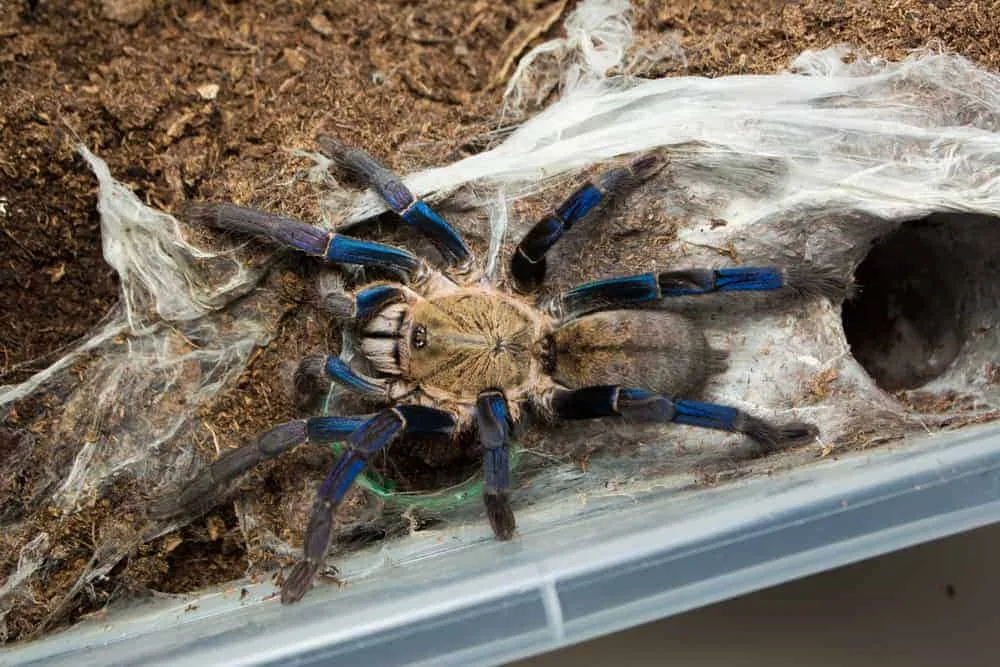
Knowing how to recognize the signs of an impending attack can allow you to take preventative measures and avoid getting bitten. The most common sign is the tarantula’s defensive posture. The spider will raise its front legs, spread its fangs, and might turn towards the perceived threat. It might also hiss, a warning sign that it feels threatened. If the spider suddenly moves, it indicates it may attack. Another sign is if the spider is rapidly flicking its legs or exhibiting agitated behavior. A tarantula that is cornered or unable to escape is also more likely to attack. Always observe the spider’s behavior closely before interacting with it or its enclosure. If you see any of these signs, back away slowly and give the tarantula space. This will help to avoid provoking an attack.
Immediate Actions During an Attack
If you are bitten, immediate action is critical. Stay calm, even though it may be difficult. Remove yourself from the immediate area to prevent further bites. Clean the bite wound gently with mild soap and water. Do not attempt to suck out the venom or apply a tourniquet; these are ineffective and potentially harmful. Apply a cold compress to the bite area to help reduce swelling and pain. Elevate the bitten limb. Monitor your symptoms closely, noting any changes such as difficulty breathing, severe swelling, or an allergic reaction. Seek immediate medical attention. Even if the symptoms are mild, a medical professional can provide appropriate treatment and assess the situation. Bring the tarantula or a picture of it to the medical facility if possible, which can aid in accurate treatment.
Protecting Yourself During a Cobalt Blue Tarantula Attack
The best way to protect yourself during an attack is to prevent it from happening in the first place. Wear appropriate protective gear when interacting with your tarantula, such as long sleeves, gloves, and eye protection. Always use tongs or other tools to handle the spider. Never put your hands near the spider unless absolutely necessary and trained. Avoid making sudden movements or loud noises near the enclosure. Keep a safe distance from the enclosure, especially when cleaning or feeding. Make sure the enclosure is secure and can not be accessed by children or other pets. If an attack occurs, stay calm and follow the immediate action steps outlined above, and try to move away from the tarantula slowly.
First Aid for Cobalt Blue Tarantula Bites

Administering first aid is essential while waiting for medical assistance. After cleaning the wound with soap and water, apply a cold compress or ice pack to the affected area for 10-15 minutes at a time. This will help to reduce swelling and alleviate pain. Keep the bitten limb elevated to minimize swelling. Over-the-counter pain relievers, such as ibuprofen or acetaminophen, can help to manage the pain. If you develop any allergic reaction signs, such as difficulty breathing or swelling of the face or throat, seek immediate medical attention. The first aid is focused on symptom management and providing comfort until professional medical care is available.
Initial Steps After an Attack
After a cobalt blue tarantula attack, take several immediate steps. Firstly, seek medical attention. Even if the bite seems minor, a medical professional can assess the situation and provide appropriate treatment. After seeking medical help, contact a veterinarian or a tarantula expert for advice on how to care for the tarantula. Assess the situation that led to the bite and review your safety protocols. Determine if any changes are needed to prevent future attacks. Carefully clean and disinfect any tools or areas that may have been exposed to the tarantula. Then, check your enclosure to ensure that it is secure and not compromised. These initial steps are crucial for addressing the immediate consequences and ensuring your long-term safety.
Seeking Medical Attention
Seeking medical attention is paramount after a cobalt blue tarantula bite. Go to the nearest emergency room or urgent care facility. Inform medical staff that you were bitten by a cobalt blue tarantula so that they can provide the appropriate treatment. Describe your symptoms and any known allergies you may have. If possible, bring the tarantula with you (in a secure container) or a photo of it to help with identification and treatment. This can help medical professionals provide the correct medication and advice. Follow the medical staff’s instructions closely and take any prescribed medications as directed. Stay at the facility for observation, especially if you experience any severe symptoms. Prompt medical attention significantly improves the outcome of a tarantula bite.
Long-Term Care and Recovery
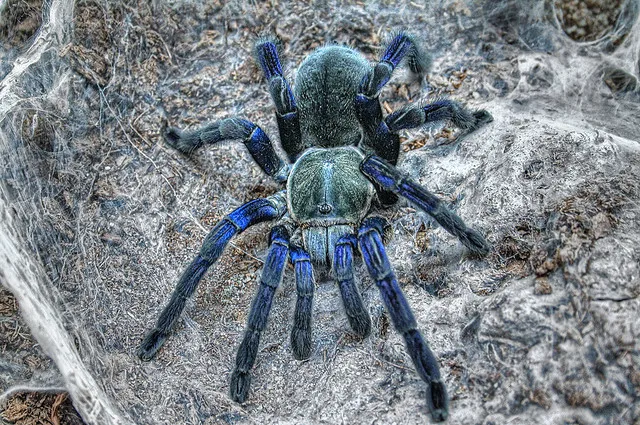
The duration of long-term care and recovery after a cobalt blue tarantula bite can vary depending on the severity of the bite and the individual’s response. Once the acute symptoms have subsided, it’s essential to continue caring for the bite wound, which could include cleaning and dressing the wound regularly. Monitor for any signs of infection, such as increased redness, swelling, pus, or fever, and consult a medical professional if these symptoms appear. Follow the medical advice on medications and aftercare. The duration of recovery can range from a few days to a few weeks. The long-term impact of the bite can vary. Some individuals may experience lingering pain, sensitivity, or changes in skin sensation. It’s very important to follow up with your healthcare provider to ensure proper healing.
Caring for the Bite Wound
Proper wound care is essential for a smooth recovery. Keep the bite area clean and dry. Gently wash the wound with mild soap and water at least twice a day. Avoid using harsh chemicals or antiseptics, which can irritate the skin. Apply a thin layer of antibiotic ointment to the wound if recommended by a medical professional. Cover the wound with a sterile bandage to protect it. Change the bandage at least once a day or more often if it becomes wet or dirty. Watch for signs of infection, such as increased redness, swelling, warmth, pus, or fever. If these signs appear, seek immediate medical attention. Following these wound care steps helps prevent infection and encourages healing.
Preventing Future Attacks
Preventing future attacks involves implementing several safety measures. Handle your tarantula with care. Always use long tongs when cleaning the enclosure or feeding the spider. Do not attempt to handle the spider unless you have experience or are under the guidance of an expert. Handle the spider in a controlled environment, such as a large container. Make sure the enclosure is secure and the habitat meets all of the spider’s needs. Never use your hands to interact with the spider. Avoid disturbing the spider while it is eating or molting. Review and improve your safety protocols. If an attack occurred, review the circumstances leading up to the incident. It is important to reassess your handling and safety measures to prevent any future attacks.
Creating a Safe Habitat
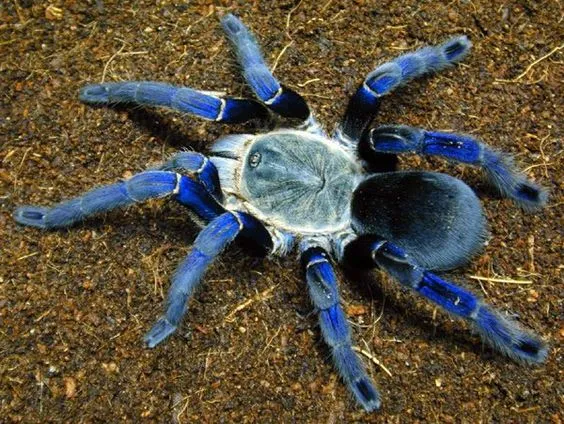
A safe habitat is crucial for both the tarantula and the owner. The enclosure should be appropriately sized for the tarantula, allowing for adequate space to move around and establish a burrow. Provide a substrate appropriate for the species; coco fiber or peat moss works well. Maintain the correct temperature and humidity levels. Provide a water dish. Furnish the enclosure with suitable hiding places, such as cork bark or artificial plants, to reduce stress and the chances of a defensive reaction. Ensure that the enclosure is escape-proof. A well-designed and maintained habitat reduces the tarantula’s stress and makes it less likely to exhibit defensive behaviors. It is important to make the enclosure as safe and comfortable as possible, which minimizes the risk of an attack.
Responsible Tarantula Handling
Responsible tarantula handling is essential for both the tarantula’s well-being and the handler’s safety. Limit handling to the absolute minimum required. Avoid handling if the tarantula is stressed, molting, or has just eaten. Always handle the tarantula in a secure area, such as inside the enclosure or a secure container, to minimize the risk of escape or injury. Use long tongs or a handling hook to gently guide the tarantula. Never try to force a tarantula to do something. Handle the tarantula gently, without squeezing or dropping it. If you’re not experienced, seek guidance from an experienced handler. Wash your hands thoroughly before and after handling. Responsible handling ensures the tarantula’s comfort and safety while preventing potential attacks.
Additional Safety Measures
Implement additional safety measures to minimize the risk of an attack. Store all tarantula-related supplies in a secure location, out of reach of children and pets. Label the enclosure clearly with the tarantula’s species and any relevant warnings. Always supervise children when they are near the tarantula enclosure. Educate yourself and others about tarantula behavior, care, and safety protocols. Have an emergency plan in place. Include contact information for local veterinarians and animal control services. Keep a first-aid kit readily available, containing essential supplies. Be prepared to react calmly and efficiently. These added safety measures help to create a safer environment, reduce the chance of an attack, and protect yourself and others.
Handling Cobalt Blue Tarantulas Safely
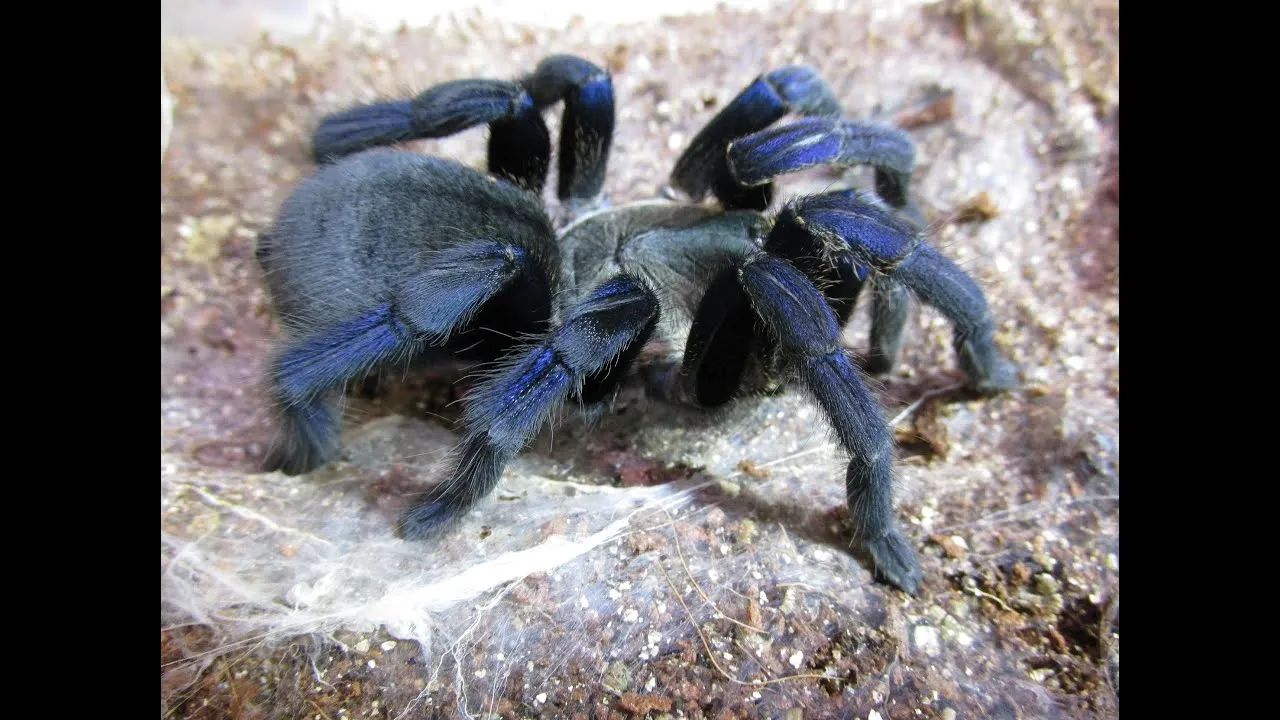
Safe handling of cobalt blue tarantulas requires a cautious approach. Handle these spiders as little as possible. When handling is necessary, always use long tongs or a specialized handling hook. This keeps a safe distance between you and the tarantula. Ensure that the tarantula is in a secure container or enclosure when you are handling it. Do not attempt to handle a cobalt blue tarantula if you are not experienced. Take your time. Handle the spider slowly and deliberately. Avoid sudden movements or loud noises. Observe the tarantula’s behavior closely. If it shows signs of defensiveness, such as raising its legs, back away. If you are unsure, seek advice from an experienced handler. Safe handling prioritizes the well-being of both the spider and the handler.
Tools for Safe Handling
Using the proper tools is essential for safely handling cobalt blue tarantulas. Long tongs are essential for moving the tarantula without putting yourself at risk. A handling hook can be used to gently guide the spider. Secure containers are useful for moving or examining the tarantula. Protective gloves can provide an extra layer of protection. A well-lit area will improve visibility and make it easier to observe the spider’s behavior. Having these tools readily available and in good condition ensures the safety of both the handler and the tarantula. Always inspect the tools before handling the tarantula. These tools will minimize the risk of an attack.
Avoiding Common Mistakes
Avoiding common mistakes is important for maintaining safety. One common mistake is handling the tarantula without adequate experience. Never attempt to handle a cobalt blue tarantula if you are unsure. Another mistake is making sudden movements or loud noises near the enclosure. Always move slowly and deliberately. Avoid handling a tarantula that is stressed, molting, or has just eaten. Do not attempt to force a tarantula to do something. Use the correct tools and techniques for handling. Make sure the enclosure is well maintained, and has all the requirements of the tarantula. Always prioritize the safety and well-being of the tarantula and yourself.
Debunking Myths About Cobalt Blue Tarantula Attacks
There are several myths about cobalt blue tarantula attacks. One common myth is that their venom is deadly to humans. In reality, the venom is not lethal, but it can cause a painful and unpleasant reaction. Another myth is that cobalt blues are naturally aggressive. In fact, they are generally defensive and will only bite if they feel threatened. Some people think that all tarantula bites require antivenom. This is not true; the majority of tarantula bites can be managed with first aid and supportive care. Debunking these myths with accurate information is important for managing expectations and providing appropriate responses. Understanding the facts can reduce fear and promote more responsible practices when caring for and handling these spiders.
